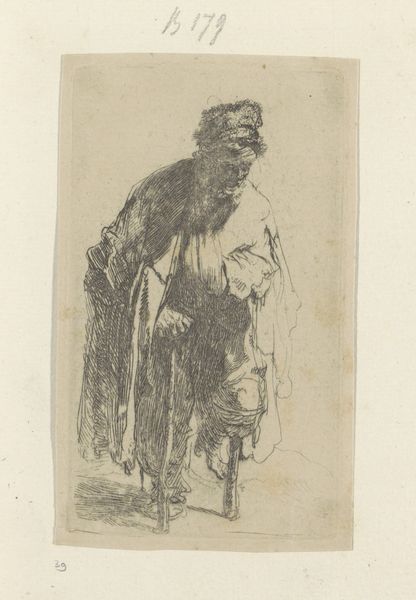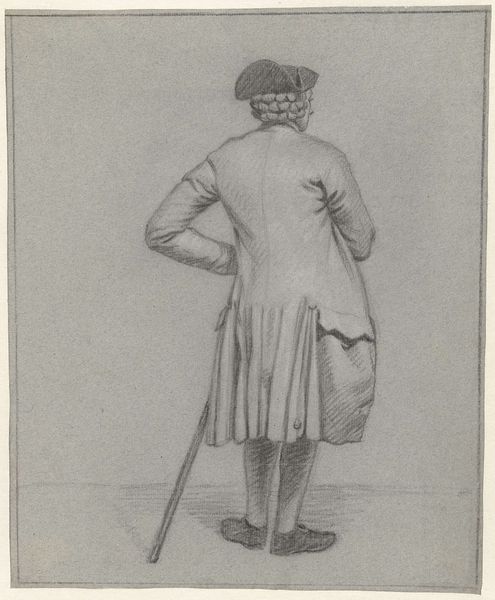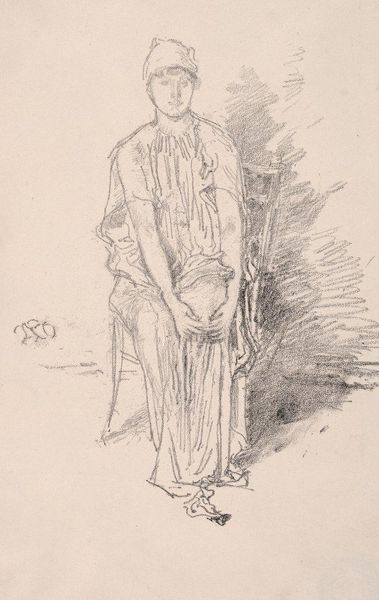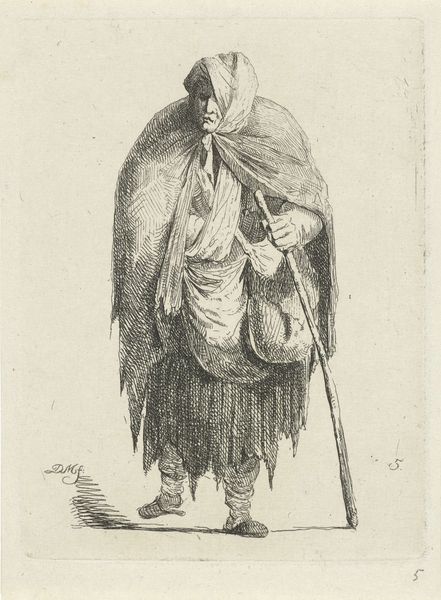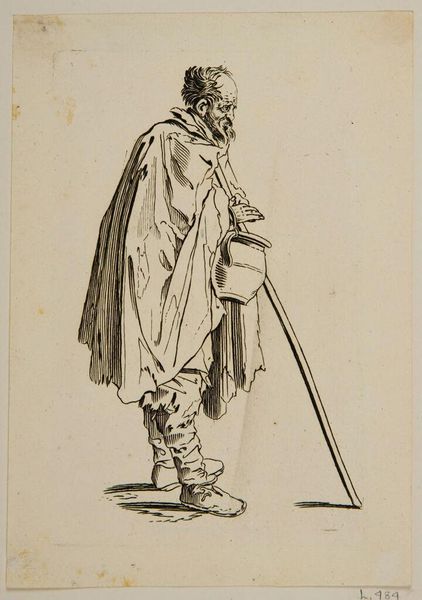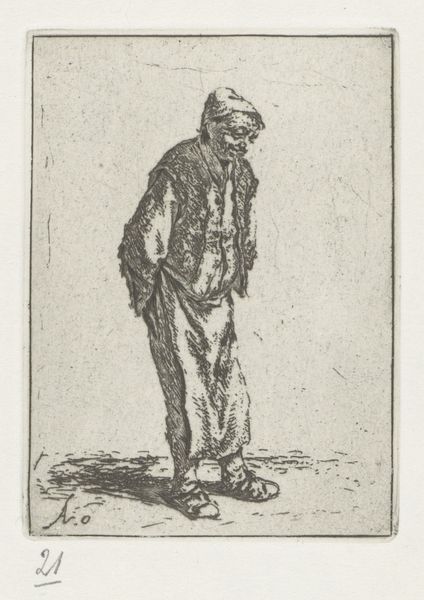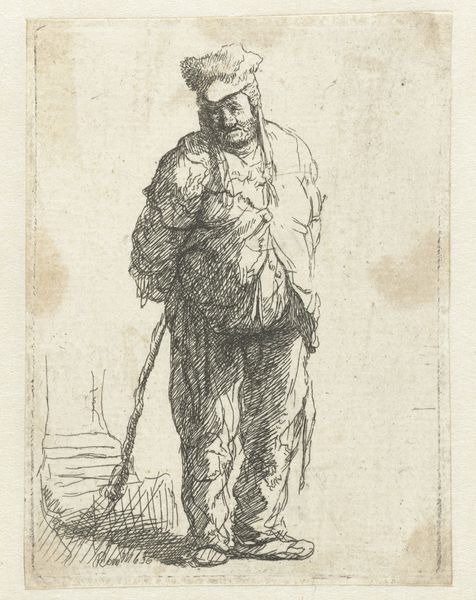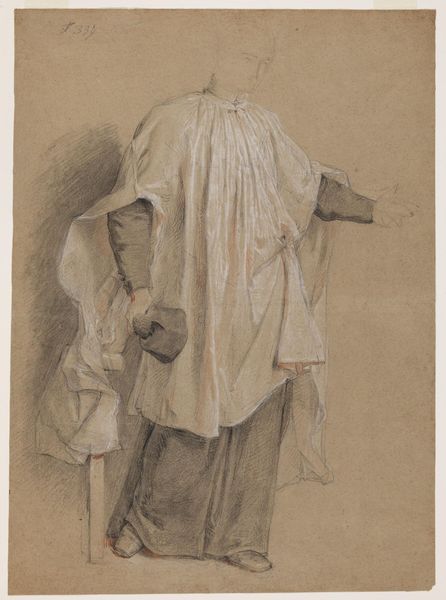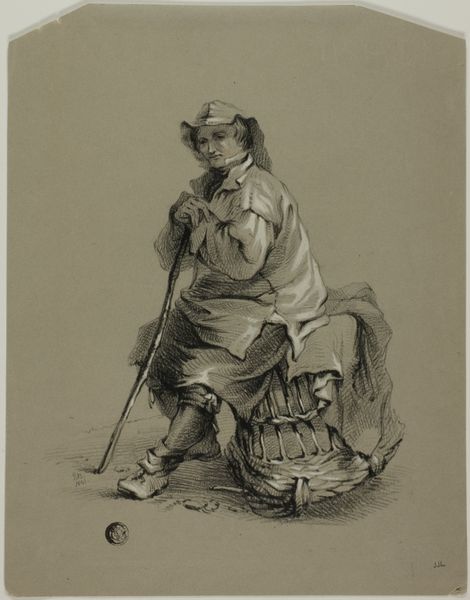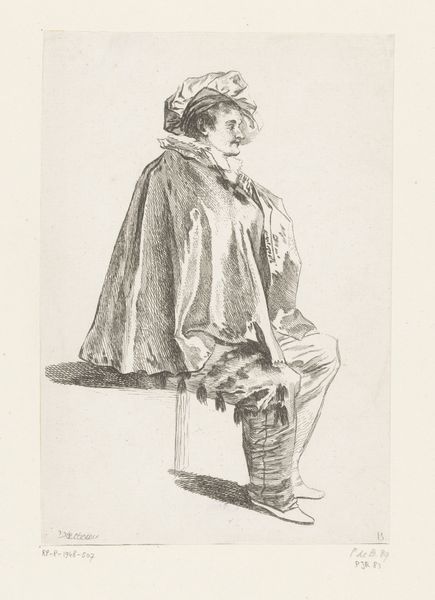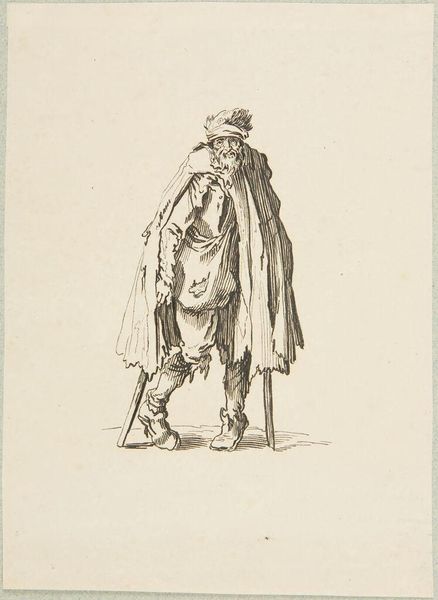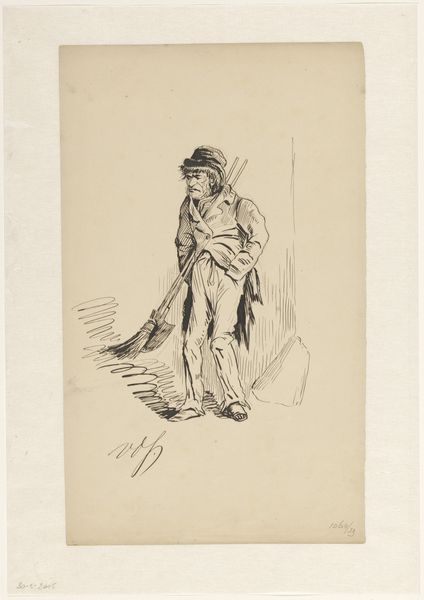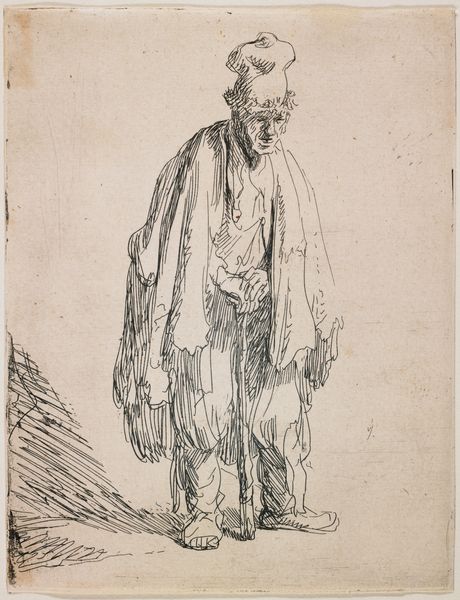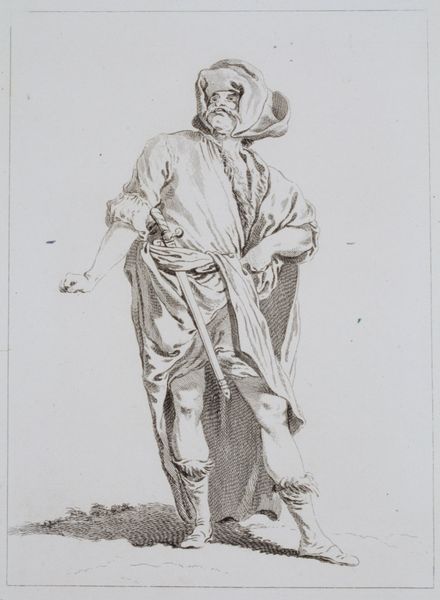
drawing, paper, ink
#
portrait
#
pencil drawn
#
drawing
#
pencil sketch
#
figuration
#
paper
#
ink
#
pencil drawing
#
portrait drawing
#
academic-art
Copyright: Public Domain: Artvee
Curator: This is Jehan Georges Vibert's "Study for the Magician in 'Conte de Fée'," believed to have been created sometime in the 19th century. It's rendered in ink and pencil on paper. Editor: My first impression is that there's something quietly melancholic about the piece. The man's stance, leaning heavily on his cane, the soft hatching—it suggests a world-weariness. Curator: Interesting. From a materialist perspective, the choice of ink and pencil on paper is significant. It speaks to the relatively low cost and accessibility of these materials, pointing to the function of the piece itself as a preliminary sketch. Vibert, known for his academic style, likely used this medium to efficiently explore different compositional ideas for the final work. Editor: True. And we might also think about the "magician" figure represented here within a larger social and historical framework. In the 19th century, figures like magicians and spiritualists were often seen as challenging the dominant scientific and religious narratives. This image then becomes part of a larger discourse about knowledge, power, and social control. Curator: I agree. Furthermore, the details of his clothing – the robe and the peculiar hat– suggest a constructed identity, costume-like in its nature. Vibert’s skilled rendering highlights the artifice, which itself invites further thought on how identity is performed and manufactured through the artistic process. Editor: And perhaps even points towards questions of authenticity within both art and identity itself? I wonder what audience he envisioned engaging with this specific "study"? Was he deliberately crafting an esoteric aesthetic for a specific subculture? Curator: Precisely. It also reminds us that art is rarely created in a vacuum. The availability of materials and the specific skills fostered by academic training shaped Vibert's artistic output, informing not just *what* he created but also *how*. Editor: It’s a powerful reminder of the layered meanings we can find even in what might appear to be a simple sketch. I’m leaving here contemplating what those hidden secrets inscribed at the bottom might actually refer to. Curator: Absolutely, a lot of it relies on decoding the conditions of artistic creation. From the texture of the paper to the socio-political forces at play, they become very important as an integral element to unlocking art's full potential.
Comments
No comments
Be the first to comment and join the conversation on the ultimate creative platform.
